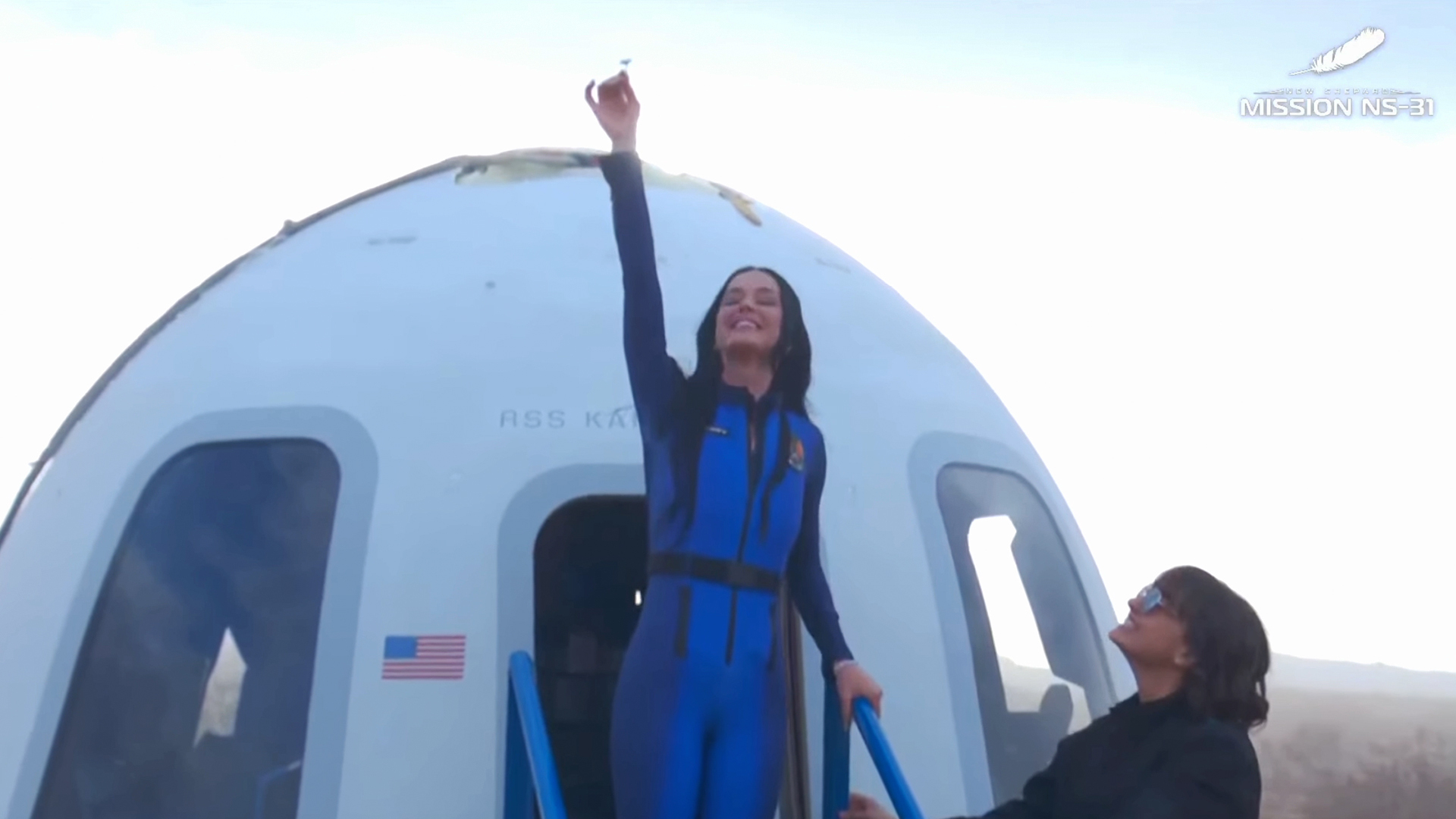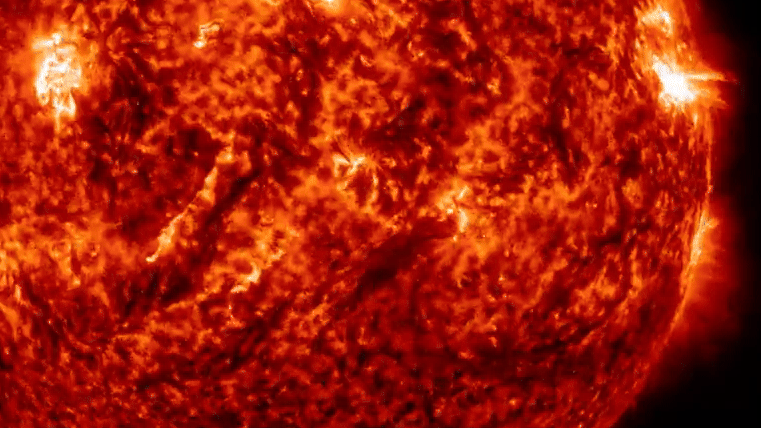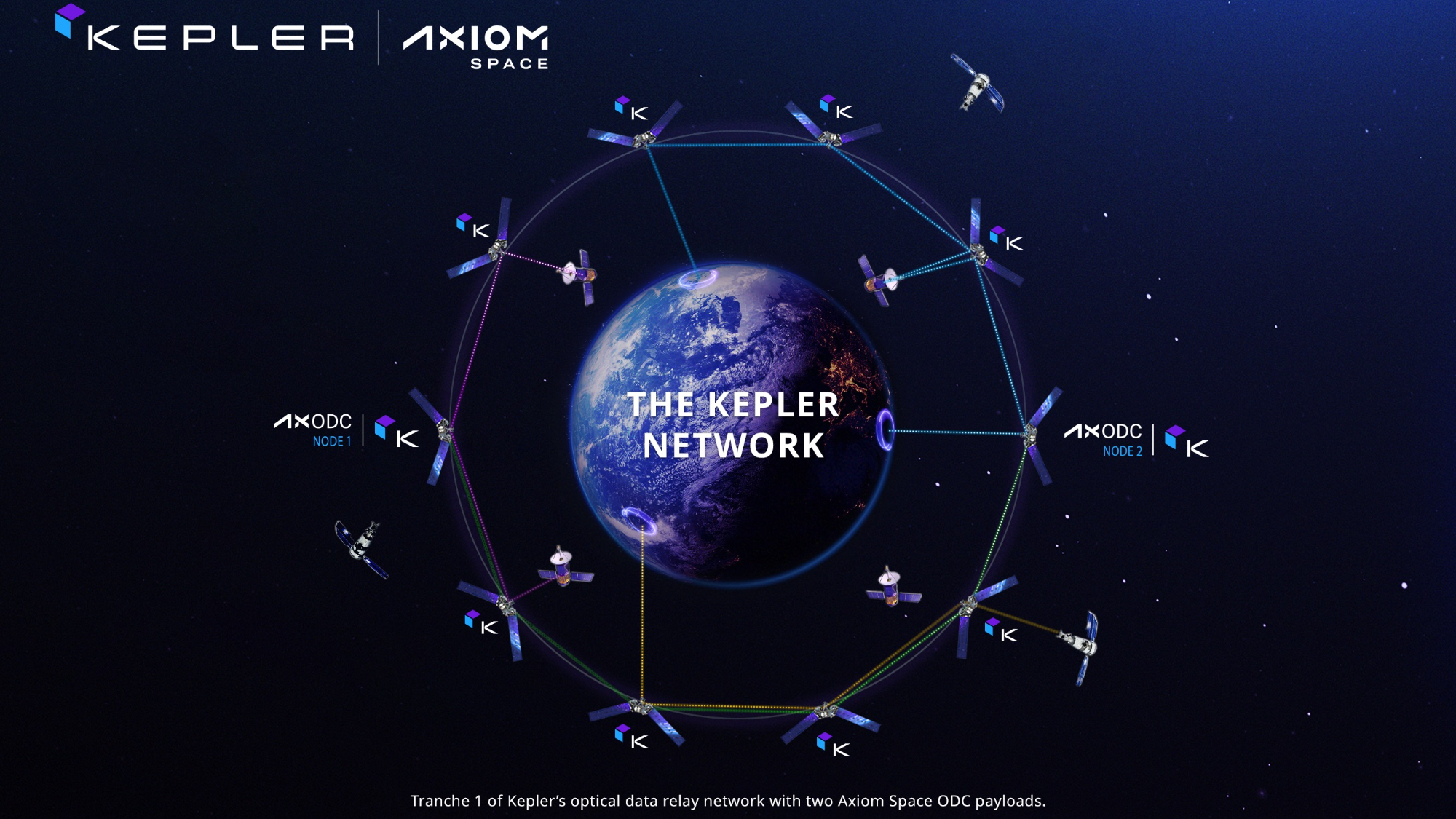40 Years Out, NASA's Twin Voyager Probes Inspire Golden Record Revivals
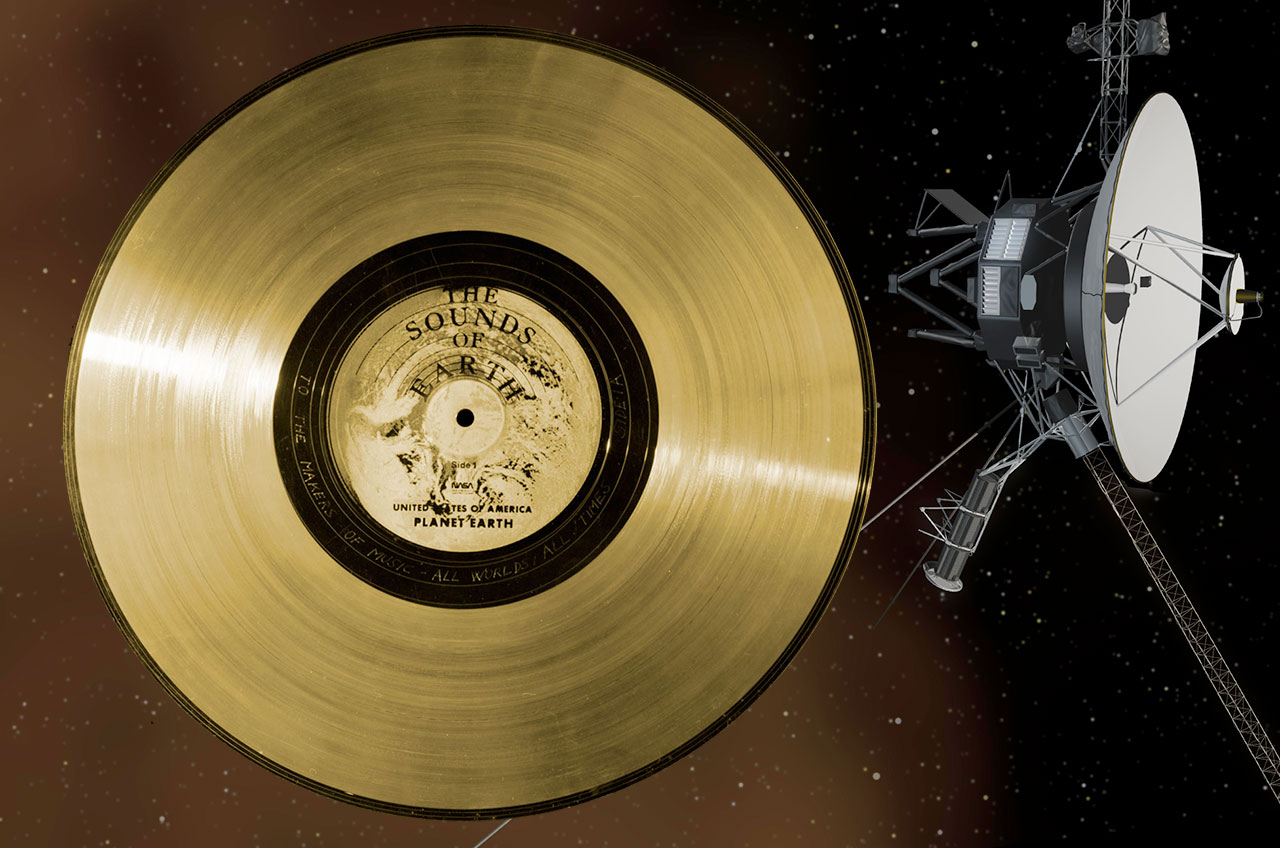
Forty years after NASA launched a pair of robotic probes on journeys out into our solar system and beyond, the messages the spacecraft carried about us still resonate here on Earth, and as dispatches going out in space.
The "Golden Record," which is mounted to both Voyager 1 and Voyager 2, convey sounds, images and greetings from the people of planet Earth on the chance that some distant extraterrestrial intelligence will one day intercept one of the probes. Now, four decades after the records were sent into space, artists who were associated with the original discs' creation, and an actor who had a fictional encounter with a Voyager probe on film, have launched projects to celebrate the Golden Record, extending its basic premise to another mission and bidding farewell to the Voyagers themselves.
"When you think of the mysterious void that's out there and what little we know, and we're sending a message out and it goes out into the stars," remarked William Shatner, who as Captain James T. Kirk in 1979's "Star Trek: The Motion Picture" came across a Voyager probe. [Voyager at 40: 40 Photos from NASA's Epic 'Grand Tour' Mission]
Voyager 1, which was launched on Sept. 5, 1977, flew by Jupiter and Saturn before becoming the first of humanity's creations to enter interstellar space in 2012. It is currently about 13 billion miles (21 billion kilometers) from the sun.
Voyager 2, which preceded its twin into space on Aug. 20, 1977, flew by Jupiter and Saturn and then became the first and only spacecraft to date to fly by Uranus and Neptune. It is now the longest continuously operating spacecraft and is on its way out of the solar system, like Voyager 1.
"From many points of view, Voyager represents humanity's most ambitious journey of discovery, and that's what I think is its legacy," said Ed Stone, Voyager project scientist and former director of NASA's Jet Propulsion Laboratory (JPL) in Pasadena, California, at an anniversary event hosted by the National Air and Space Museum in Washington, DC on Tuesday (Sept. 5).
Though both craft continue to send data back to Earth, the information the Voyagers carry outward — in the format of the Golden Record — will ultimately be their final mission.
Get the Space.com Newsletter
Breaking space news, the latest updates on rocket launches, skywatching events and more!

'You are not alone'
Inspired by the goodwill messages carried on the Golden Record, NASA chose to mark the 40th anniversary of the Voyager 1 launch by inviting the public to help identify a short message to be transmitted to the probe and what lies beyond it. The message was limited to 60 characters long, including spaces and punctuation.
"Only 60 characters, that's half a tweet. Not a lot of space for a large space," noted Shatner, who gave the command to begin sending the message at JPL on Tuesday.
Out of thousands of entries received, NASA narrowed the choices to 10, from which a public vote chose the winner. Oliver Jenkins, @Asperger_Nerd on Twitter, submitted the winning message.
"We offer friendship across the stars. You are not alone," said Shatner, reading Jenkins' entry.
The 56-character long message was translated by JPL into 448 bits and put into the Voyager command format.
"We're sending it at the Voyager rate of 16 bits per second, which means it will take 28 seconds for the message to be totally transmitted," said Jeff Berner, Deep Space Network chief engineer at JPL. "It will take about a little over 19 and a quarter hours for it to pass by Voyager on its way out to interstellar space. It will have traveled 12.9 billion miles."
"It's a magical moment to send a message to Voyager, and once it reaches Voyager, it keeps going," said Shatner. "It's like an advance man, 'Voyager coming! Voyager coming!' to all the little green people out there."
Remastered and reinterpreted
The Voyager launch anniversaries have also driven artists to take a new look at the Golden Record and make it more accessible to the public today.
Following a Kickstarter campaign that raised $1.4 million, Ozma Records is now producing a vinyl box set featuring three translucent gold LPs containing the same greetings, music and sounds as archived on the Golden Record. The set, which is also available on CD, comes with a softcover book containing all of the images included on the original disc, as well as a gallery of photos that were transmitted by the Voyager probes and a new essay by Timothy Ferris, the producer of the Golden Record. [The Golden Record in Pictures: Voyager Probes' Message to Space Explained]
The $98 vinyl box set (and $50 CD set) will begin shipping in mid-November.
"There are so many revelations hidden deep within the 27 pieces of music, the sound essay, and the greetings from humans and the humpback whales," said Ann Druyan, the creative director of the Voyager Interstellar Message, as a part of the Smithsonian anniversary event on Tuesday.
A different, on-going Kickstarter campaign approaches the same data from another angle. Graphic designers James Lowe and Alex Szabo-Haslam of the United Kingdom have reinterpreted the Golden Record contents to create artistic visualizations.
"Using time data generated by all sounds from the Golden Record, we have produced two data visualizations: one is a spiral-shaped object, mimicking the 12-inch disc; and the other is a square made from strips of data," Szabo-Haslam and Lowe wrote.
Alongside the silkscreen prints, Lowe and Szabo-Haslam are also proposing to reproduce the original artwork from the Golden Record's cover, which provided instructions on how to play the disc and information on Earth's location using hieroglyphics. The designers' campaign, which offers each limited edition print for about $40, is set to close on Sept. 14.
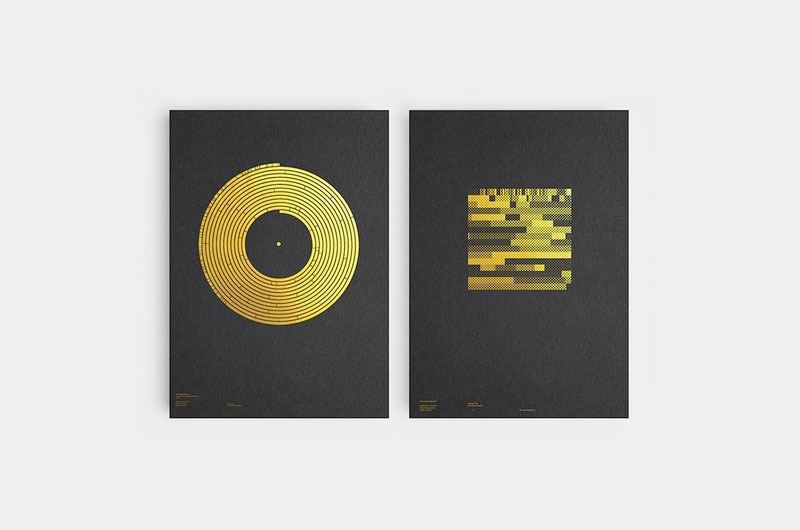
One Earth Message
Another Kickstarter campaign offers its backers a remix of the Golden Record while underwriting the creation of the next generation of the concept.
"One Earth Message," as proposed by Jon Lomberg, the design director for the Golden Record, is a digital message that will include pictures and music submitted by people all around the Earth, intended to be uploaded to NASA's New Horizons spacecraft, which is now out beyond the orbit of Pluto.
"We view what we're making is a kind of a library, not only of content, but also of a method for storing this content in a way that might actually be decipherable," said Lomberg in a live Kickstarter webcast on Tuesday. "Of course, this is all contingent on us having a project, which means getting the funding to do it."
For pledges of $55 or more, backers will receive a copy of "The Golden Record: TNG," a vinyl record that remixes the original audio the Voyager discs. The album is the work of Tonio Sagan, the eldest grandchild of the late astronomer Carl Sagan, the executive producer of the Golden Record, and Merav Lomberg ("DJ Merav"), Lomberg's daughter.
If the One Earth Message campaign achieves its $72,000 goal by Sept. 29, the project will open and manage a web-based platform for worldwide submissions. Lomberg and his team are suggesting to NASA that the resulting compiled message be uplinked to New Horizons in 2020 using the same Deep Space Network used to transmit the message to Voyager 1 on Tuesday.
"Spacecraft are beautiful engineering accomplishments — almost like works of art, and I think works of art should be signed," explained Lomberg. "To me, the Golden Record is the human fingerprint; it is the signature of our species on one of the best things we ever made."
"I think that every spacecraft deserves to have that kind of signature," he said.
Watch William Shatner give the command to send a message to Voyager at collectSPACE.
Follow collectSPACE.com on Facebook and on Twitter at @collectSPACE. Copyright 2017 collectSPACE.com. All rights reserved.
Join our Space Forums to keep talking space on the latest missions, night sky and more! And if you have a news tip, correction or comment, let us know at: community@space.com.

Robert Pearlman is a space historian, journalist and the founder and editor of collectSPACE.com, a daily news publication and community devoted to space history with a particular focus on how and where space exploration intersects with pop culture. Pearlman is also a contributing writer for Space.com and co-author of "Space Stations: The Art, Science, and Reality of Working in Space” published by Smithsonian Books in 2018.In 2009, he was inducted into the U.S. Space Camp Hall of Fame in Huntsville, Alabama. In 2021, he was honored by the American Astronautical Society with the Ordway Award for Sustained Excellence in Spaceflight History. In 2023, the National Space Club Florida Committee recognized Pearlman with the Kolcum News and Communications Award for excellence in telling the space story along the Space Coast and throughout the world.




